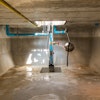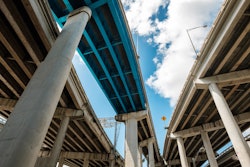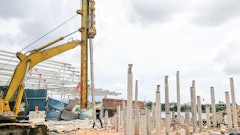
This week, the Federal Highway Administration launched an update for its index of highway construction costs, dated for the July 2022 - September 2022 quarter. Unfortunately, the news is not good. The damage done by inflation on the road building sector was worse than previously estimated. The effects were felt more acutely in our industry than across the general economy. Road building costs have now soared up 50% greater than they were in December 2020, shortly after the passage of the IIJA into law..
What may not come as a surprise to anyone, fossil fuels are at the heart of the issue. Quarter over quarter, the percentage increase of costs were +9%. The two biggest factors driving the quarterly increase were the price of asphalt, which is heavily tied to the price of crude oil (making up 3.5% of the increase), followed by the costs associated with expensive grading and excavation (deeply dependent on diesel fuel costs).
The FHWA started estimating the National Highway Construction Cost Index (NHCCI) in 2003, and if you take a look at the newly released graph, you can see for yourself just how severe the situation has become:
 Taken from the USDOT National Highway Construction Cost Index, interactive dashboard
Taken from the USDOT National Highway Construction Cost Index, interactive dashboard
When the NHCCI began in third quarter of 2003, construction costs were assigned a flat 1.000 value, compared to the newly reviewed portion (the third quarter of 2022) which rose to 2.7862 on the index. Essentially, that means the costs of highway construction projects are just shy of 2.8 times their costs 20 years ago. Over that span of time, the increase might not appear as severe as it really is, so it is more effective to compare the recent rise in cost versus previous periods of increase.
According to the chart, the previous two-year period of rapid inflation was the stretch between 2004-2006, a time when oil prices had doubled, and China entered the WTO. During that run, the index rose by approximately .6 on the graph. This compared to the most recent run, is not really close, where the index has grown by nearly 1 full point.
The last lowest-point was during the final quarter of 2020. In a breakdown of the index's growth since then, Jeff Davis, wrote for the ENO Center for Transportation about the hard numbers:
| Quarter | NHCCI | Increase |
| Oct.-Dec. 2020 | 1.8601 | — |
| Jan.-Mar. 2021 | 1.9112 | +2.7% |
| Apr.-Jun. 2021 | 2.0363 | +6.5% |
| Jul.-Sep. 2021 | 2.1075 | +3.5% |
| Oct.-Dec. 2021 | 2.1821 | +3.5% |
| Jan.-Mar. 2022 | 2.2841 | +4.7% |
| Apr.-Jun. 2022 | 2.5552 | +11.9% |
| Jul-Sep. 2022 | 2.7862 | +9.0% |
| 3Q CY22 Over 4Q CY20 | +49.8% |
What is the overall net impact on the IIJA and its spending power? For contractors who've been dealing with the impacts of inflation on a daily basis, the answer is likely obvious. It's the same scenario as bidding on a job, having it accepted, and then by the time the work is done, inflation has caused the original job estimates to be woefully outdated.
What is the gap in relation to the federal government, the IIJA, and its commitments? In a tweet from Jeff Davis' personal twitter account on April 18, 2023, he said:
"New data from @USDOTFHWA says that the cost of building & maintaining highways has risen 50% since 2020, effectively reducing FWHA buying power by $21.5 billion ($115b in nominal obligations = $93.6b in "real" obligations)."
The IIJA has seen nearly one-fifth of it's road building budget lost to the erosion of economic inflation. Despite this unfortunate news, there is a concern that the IIJA itself might exacerbate certain factors at play even further. Even if fossil fuel prices do come down to a reasonable level, the market hasn't truly seen the full force of the IIJA funding on material production capacity. The demand for construction materials might sharply rise even more, and in the current labor market, the demand for quality labor could see wages continue to rise too.
Near the end of the calendar year 2022, concerns among certain economists were raised about the possibility of an economic "dip" or even a recession. Thankfully, those fears have yet to materialize, but these figures are concerning for a host of reasons. In the ForConstructionPros.com Road Building State of the Industry 2023 Report, when asked about the impacts of continued material cost escalation, Dr. Alison Black, senior vice president & chief economist, ARTBA said:
Forty-eight percent state DOTs reported they canceled, delayed, or pulled projects from the schedule because of issues with material costs or availability. Nearly all respondents agreed that engineers’ estimates have been less accurate because of rising material costs. Research by ARTBA on state bid patterns suggests that overall, low bids are coming in about ten percent above engineer’s estimates.
These comments were based in the last quarter of 2022, but if we extrapolate the conditions Black described at the time onto an even more dire situation in the present, it could reveal the fallout from this unchecked inflation for road builders. It might mean more canceled projects, more delays, and spell desperate uncertainty for the future of the IIJA's infrastructure goals.




















